The secrets of Buckingham Palace’s cleaning staff
Cleaning secrets from the world's finest homes
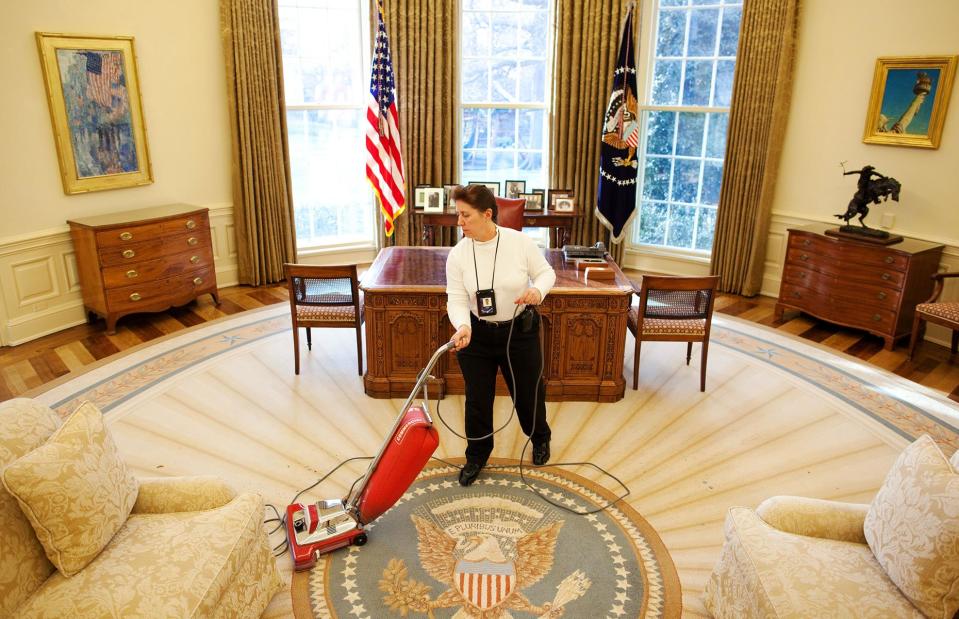
Official White House Photo by Chuck Kennedy
If you think five or six rooms is plenty when it comes to tackling the household cleaning, just imagine being faced with Buckingham Palace's 775. The following stately landmarks welcome illustrious guests with very high standards, so a quick vacuum won't cut it either.
Wondering how royal palace housekeepers or White House staff keep these prestigious homes spotless? We have the insider tips and tricks of the trade from the real people who put in the elbow grease. Read on to learn their secrets...
Inside Buckingham Palace
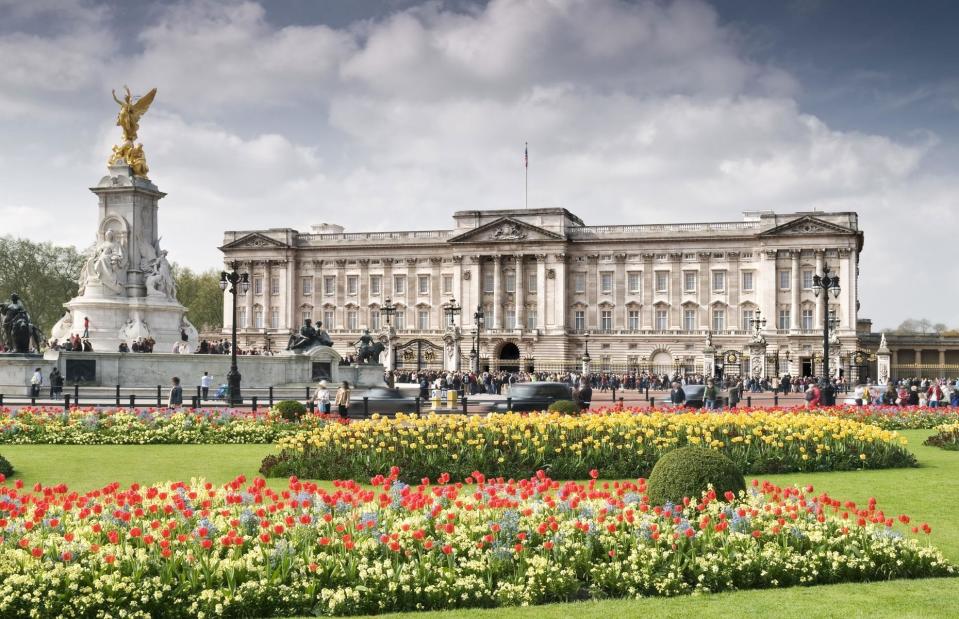
R Nagy / Shutterstock
Measuring 828,000 square feet and comprising a total of 775 rooms, which include 19 staterooms and 52 royal and guest bedrooms, along with 188 staff bedrooms, 92 offices, and 78 bathrooms, cleaning Buckingham Palace is a monumental task.
With a constant flow of distinguished guests, around 50,000 a year, who attend state banquets, lunches, dinner, and garden parties, the King needs an army of staff to keep it looking its best.
Vacuum cleaners are banned
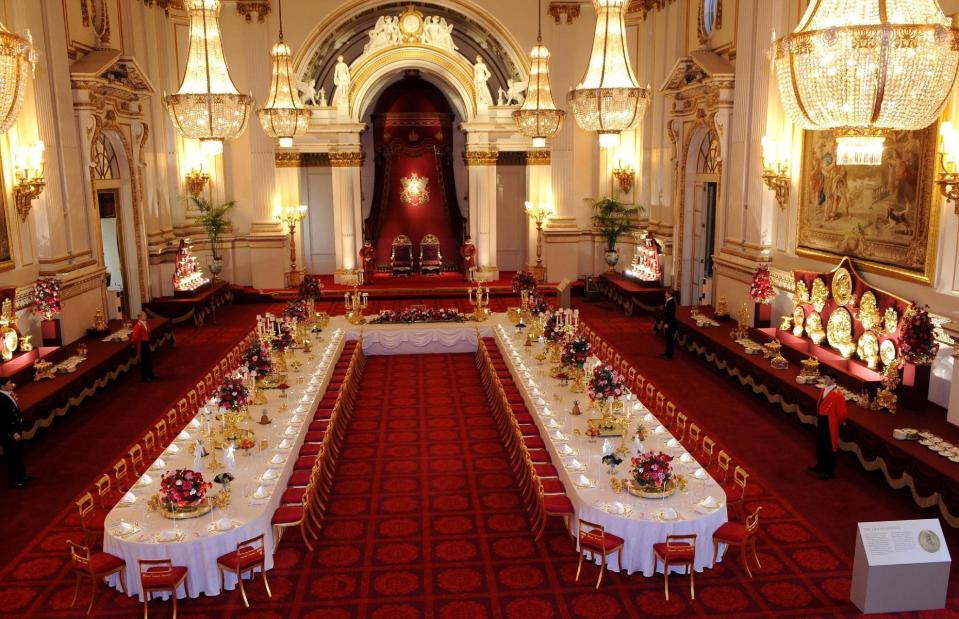
Pool / Tim Graham Picture Library / Getty Images
According to the 2011 documentary Royal Servants, vacuum cleaners are banned at Buckingham Palace, . "Cleaners sweep carpets, lest royal ears are offended by vacuum cleaners. The best servant is one that is neither seen nor heard," says one former employee.
Of course, this may no longer be the case given that the palace is still undergoing a huge renovation that is not expected to be completed until 2027, so there are no royal ears to offend. Plus, the King has not even decided if he intends to move in when it is. So the palace staff can raise the roof in the meantime!
Cleaning windows
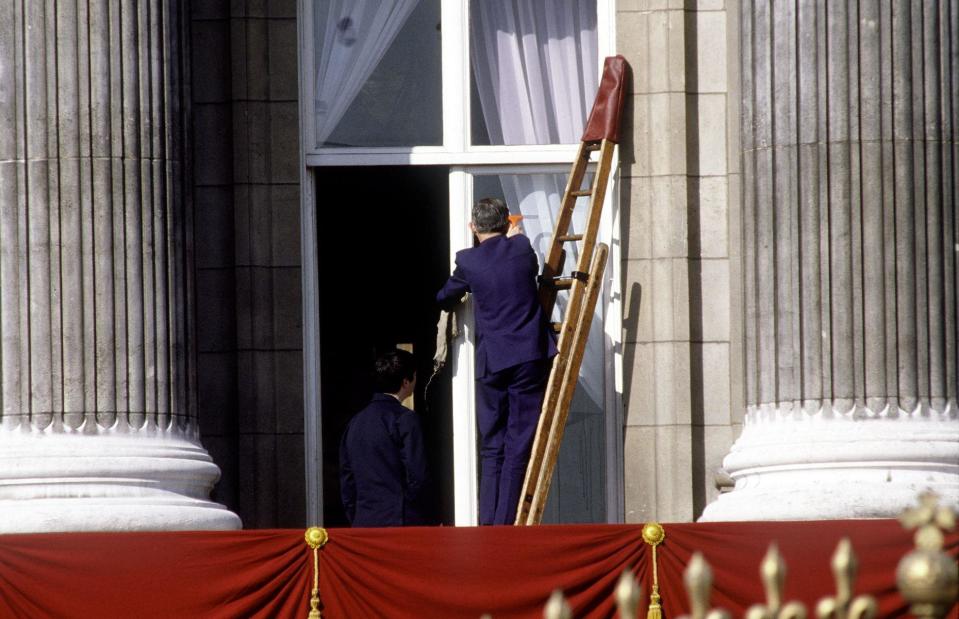
Tim Graham / Getty Images
The outside of the palace is every bit as important as its interiors when it comes to cleaning. Buckingham Palace has 760 windows and each one is cleaned at least every six weeks to keep the building looking spotless.
Palace staff are expected to clean accessible windows, as seen here, but without scaffolding. Window cleaners tend to use ladders and a special brush at the end of a 100-foot telescopic pole to reach those hard-to-reach upstairs windows.
Regal standards
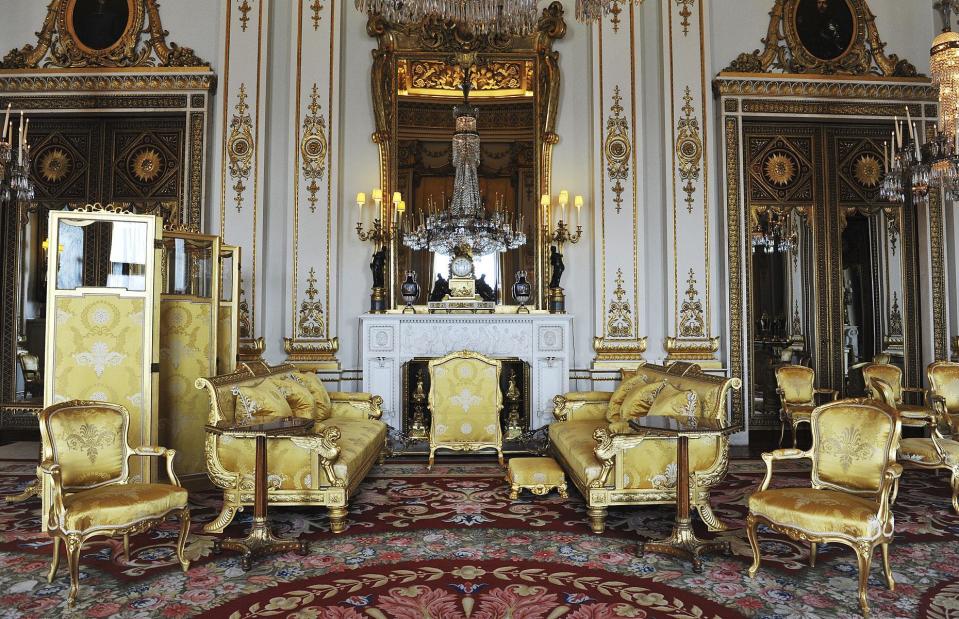
WPA Pool / Getty Images
The palace employs more than 800 staff to keep every corner of the palace, like the White Drawing Room seen here, in working order. All potential employees undergo a tough selection process, according to head of recruitment Tracey Waterman.
This includes the 'dead fly test', whereby a dead fly is placed in the fireplace or on the carpet to see if the candidate spots it. Those that do, and dispose of it, are deemed “special,” said Tracey in a report in The Daily Mirror.
Going the extra mile
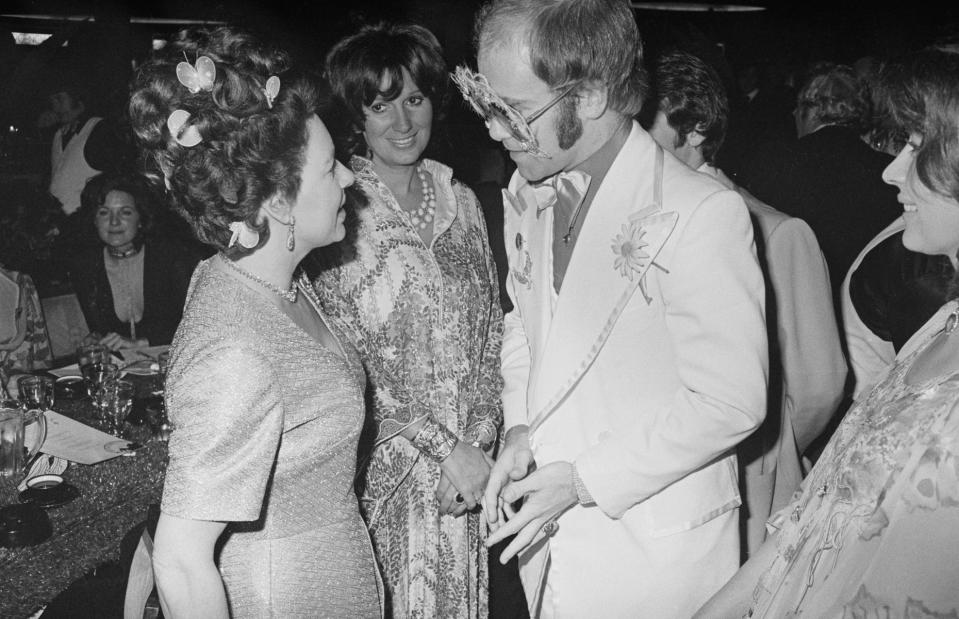
David Cairns / Hulton Archive / Getty Images
Some aspects of the job can be less than glamorous, even if working at a palace means rubbing shoulders with high society. Peter Russell, a royal servant from 1954–1968 revealed in the documentary Royal Servants, that on occasion he was expected to stand near Princess Margaret at balls and banquets and hold an ashtray so that she didn’t have to worry about where she flicked her ash.
We can't spot him in his shot of the Princess chatting to Elton John, but he may be hovering on the edges!
Gravy spill
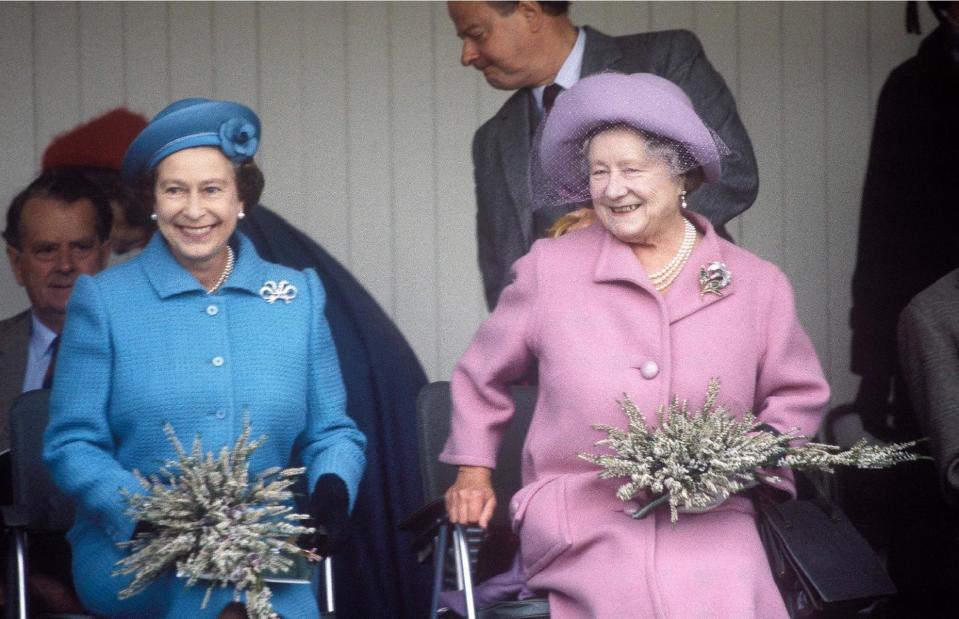
Hulton Royals Collection / Getty Images
In the same documentary, Paul Kidd, who served as royal butler from 1975-1982 recounted how the late Queen took the blame when he accidentally spilt red-hot gravy on the Queen Mother’s cleavage, claiming she had elbowed Kidd.
“She hadn’t touched me at all,” he says. “That was her gracious way of realising the agony I was in after putting the Queen Mother in extreme agony.”
Sandringham secrets
![<p>David Dixon / Wikimedia Commons [CC BY-SA 2.0]</p>](https://s.yimg.com/ny/api/res/1.2/4MZjsymGTymKBMWPOHI_Zg--/YXBwaWQ9aGlnaGxhbmRlcjt3PTk2MDtoPTYxOQ--/https://media.zenfs.com/en/loveproperty_uk_165/54170673e47253dda10fbfbf6b0db6fa)
David Dixon / Wikimedia Commons [CC BY-SA 2.0]
One of the late Queen’s favourite private residences, and where the royal family spend Christmas every year, Sandringham House in Norfolk, exemplifies the monarch’s high standards in household excellence.
With so many high-ceilinged rooms, furnished in lavish upholstery and priceless antiques, it must be a nightmare to clean. Yet the household staff at this stunning manor house, which dates back to Elizabethan times, are experts in keeping it pristine at all times.
Queen of housekeepers
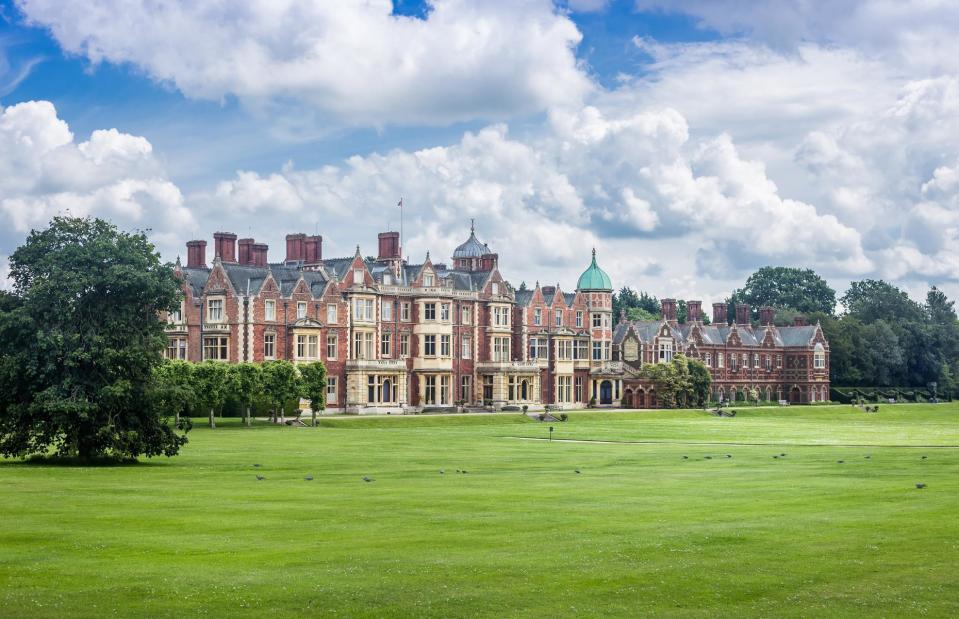
Liz Coughlan / Shutterstock
If anyone can teach you how to be a domestic goddess, it’s Barbara Allred, who was head housekeeper at Sandringham for a decade. She is now a tutor for The English Manner, which trains butlers and household staff for billionaires and celebrities alike, but she used to keep the spectacular Norfolk estate in tip-top shape for the monarch and her illustrious guests.
Barbara had all the mod cons at her disposal when she was in charge at Sandringham when the late Queen was alive, but relied on a surprising number of old-fashioned techniques to keep the country home spick and span.
Spick and span
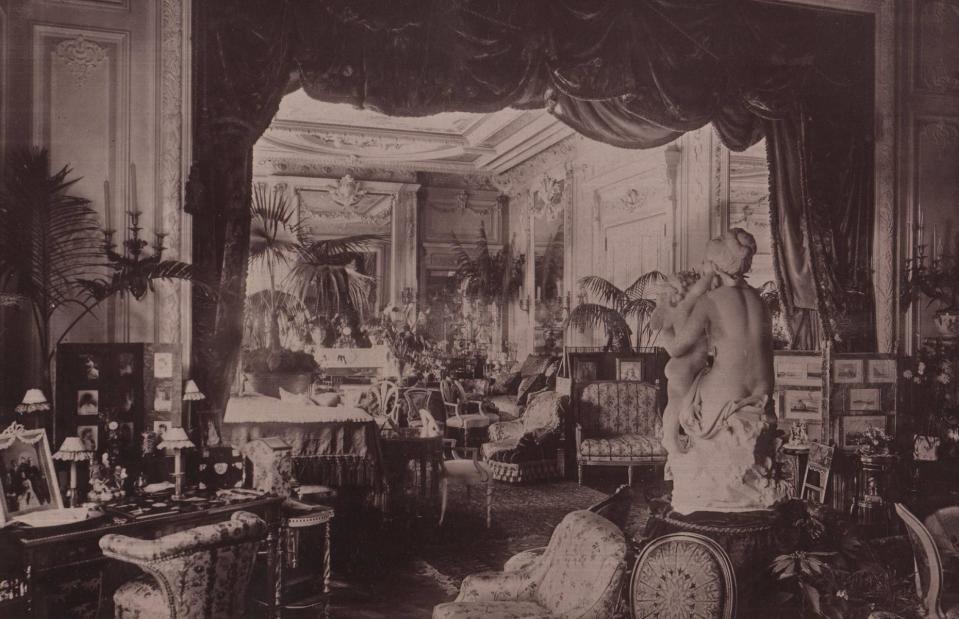
Bedford Lemere & Co. Waterlow & Sons Ltd Photoprint / Alamy Stock Photo
Sandringham was given to Queen Victoria’s eldest son, Albert, in 1862 ahead of his 21st birthday. The old Hall was demolished to make way for a new house following his marriage to Princess Alexandra of Denmark in 1863 and the main part, including the Princess of Wales' Drawing Room (pictured), was completed in 1870. The reception rooms at Sandringham are more pared back these days than they were when this photograph was taken of the room in 1889.
Even Barbara might have struggled to reach every nook and cranny in this rather busy salon, bursting with richly upholstered furniture, statues, photographs and heavy velvet drapes. Barbara used a damp cloth to dust the antiques and ornaments and an extended brush to get rid of cobwebs from the ceiling down.
Come dine with me
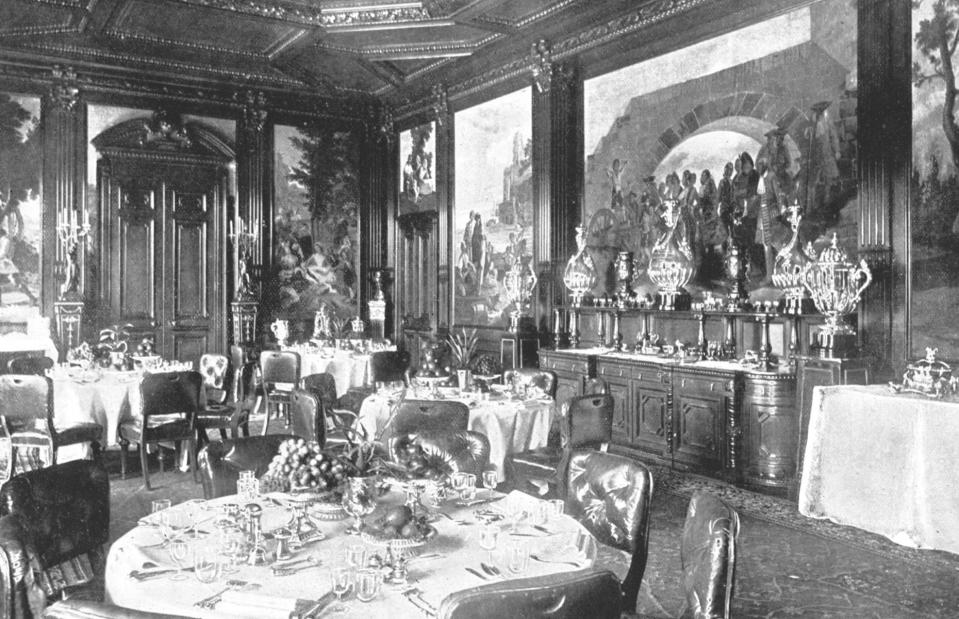
The Print Collector / Alamy Stock Photo
The late Queen loved a well-laid table and Barbara was meticulous about the finer details. The correct form is to position place settings an inch from the edge of the table, with the side plate at ten o'clock in relation to the main plate, she told The Daily Mail. Glasses are at two o'clock, while the sweet fork and spoon are normally positioned at the top of the main plate. The red wine glass is traditionally larger, and to the right. The white wine glass is smaller, to its left.
Have a look at the stunning ceiling in this faded print of the dining room taken in 1894. Barbara must have had a tall ladder to reach the intricate carvings with her feather duster!
A pleasure to work for
![<p>Wikimedia Commons [Public domain]</p>](https://s.yimg.com/ny/api/res/1.2/5gmEBeJ8vJloDl3N2L68Jw--/YXBwaWQ9aGlnaGxhbmRlcjt3PTk2MDtoPTYxOQ--/https://media.zenfs.com/en/loveproperty_uk_165/54421a5b6dde8be93e1509afcba1c231)
Wikimedia Commons [Public domain]
This charming old Oilette post card, printed by Raphael Tuck & Sons, art publishers to the monarch, show a splendid view of the dining room set for dinner just as Barbara described. Despite her high standards, the late Queen was a pleasure to work for, says Barbara.
On one occasion, the housekeeper used a new laundry service who slightly overdid it on the starch, leading the Queen to comment light-heartedly: “Barbara, the napkins seem awfully stiff. One could cut one's lip!". "That is the kind of person you want to work for,” says Barbara. "She was a delight. Those who have been brought up with staff know how to treat staff."
Tricks of the trade
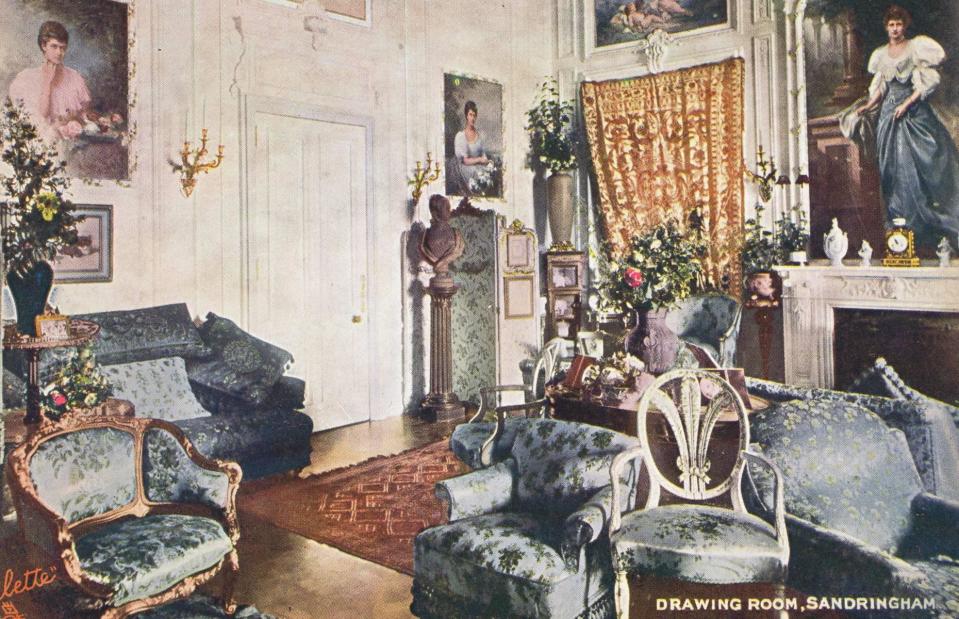
FAY 2018 / Alamy Stock Photo
Barbara knows all the tricks to keep things gleaming, like here in the drawing room, pictured here in another charming Oilette postcard, and featuring portraits of Queen Alexandra.
In the bathrooms, she makes her own paste to remove limescale on chrome taps by mixing 2 tablespoons (36ml) salt with 1 teaspoon (6ml) white distilled vinegar, using a toothbrush to reach difficult areas. She also removes mildew with a mixture of equal parts lemon juice and baking powder, which she leaves on for two hours before rinsing.
Knock on wood
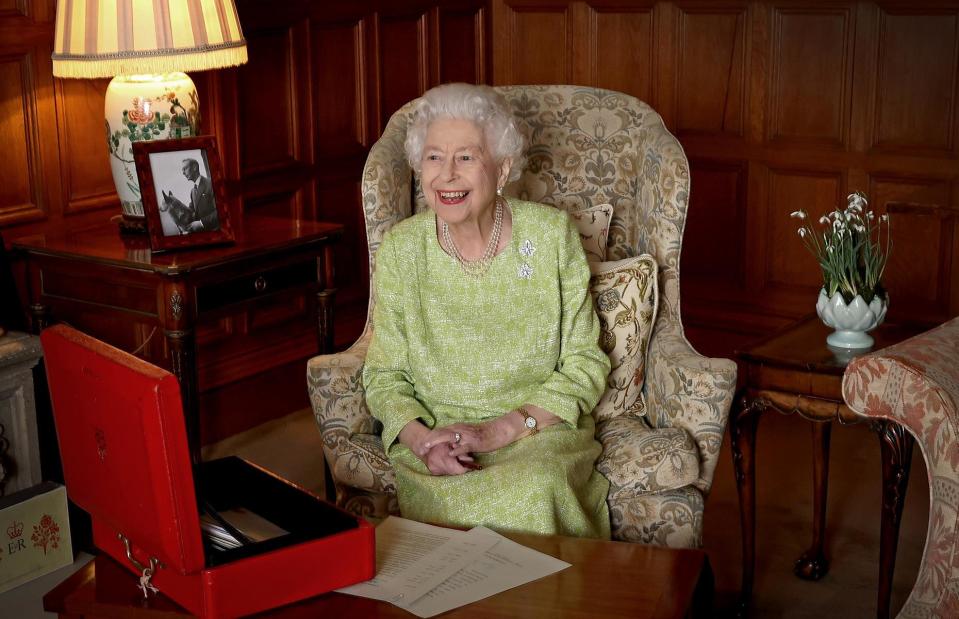
Chris Jackson / Getty Images
There are a lot of wood surfaces at Sandringham. This image of the late Queen taken there in February 2022, ahead of her platinum jubilee, displays the stunning veneer of the wood panelling.
Proper dusting requires a squeezed-out cloth to collect all the particles, says Barbara, and you should never spray polish directly onto the wood but onto a soft cloth first. She also suggests using the same approach for cleaning your windows.
Gin palace
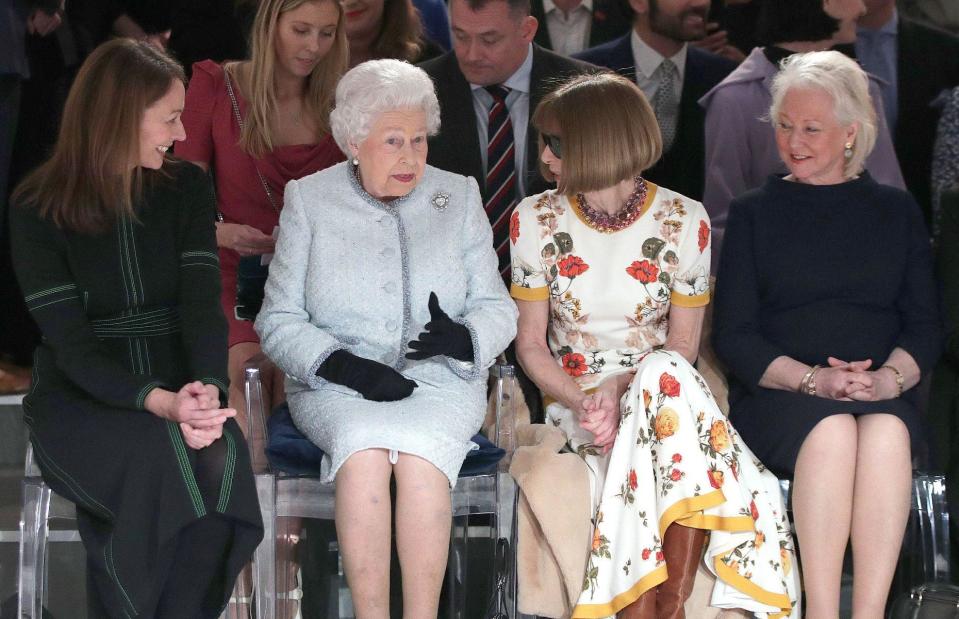
PA Images / Alamy Stock Photo
As well as Barbara Allred, others close to the Royals have shared cleaning secrets over the years too. The Queen’s longtime dresser and close companion Angela Kelly, seen here in black on the far right next to Anna Wintour at London Fashion Week in 2018, probably knows more than most when it comes to tricks of the trade.
She revealed some of the best in her book The Other Side of the Coin: the Queen, the Dresser and the Wardrobe, where she disclosed that she cleaned the Queen’s diamonds and tiaras with a simple mixture of gin and water.
The White House
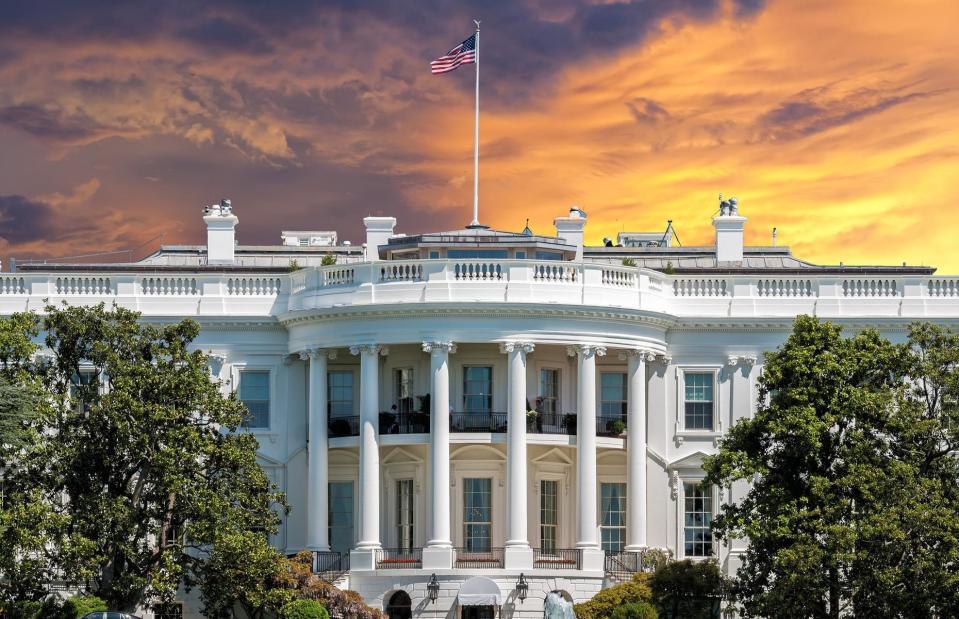
Andrea Lzzotti / Shutterstock
From royalty to presidents. Behind the famous façade of the White House an army of maids, florists, valets and chefs work from dawn to dusk ensuring the smooth running of the most recognisable home in the world.
Arranged over six floors, with 132 rooms, 35 bathrooms, 28 fireplaces, eight staircases, three elevators and a floor space of some 55,000 square feet, it takes a full-time staff of 96 to maintain the second and third floors that make up the private quarters of the US President.
The White House
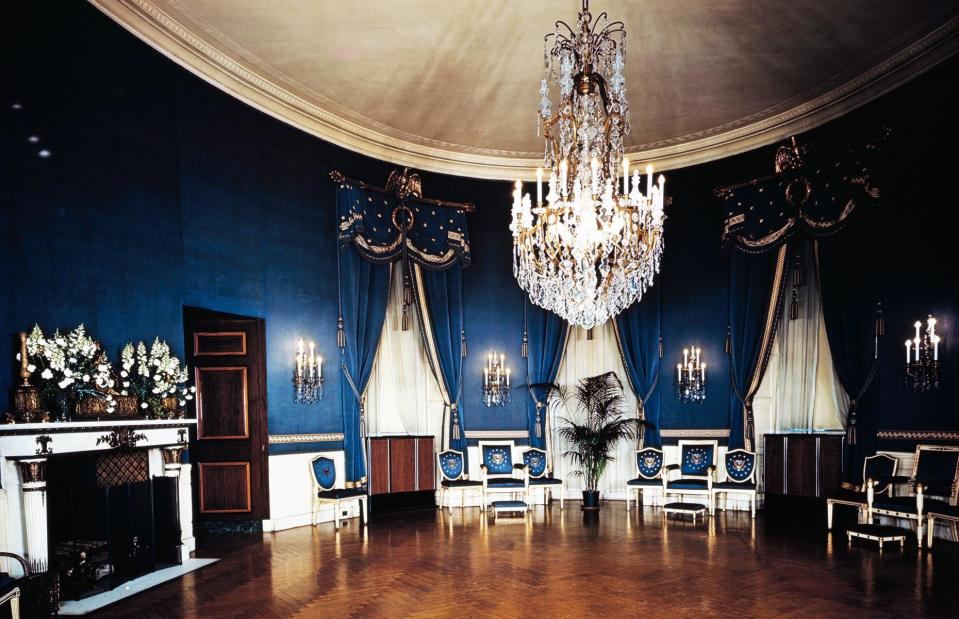
Bettmann / Getty Images
This is White House's 'Blue Room', photographed in February, 1948. This space alone might take the average person a few hours to thoroughly clean, but the White House knows better. It hires entire teams.
90 people were on hand to clean up before President Biden moved into the White House in January 2021. Transition teams usually have just six hours to prepare the property for the new incumbent, but were pushed to the limit on this occasion as an additional deep clean was required due to the Covid-19 pandemic.
Deep clean
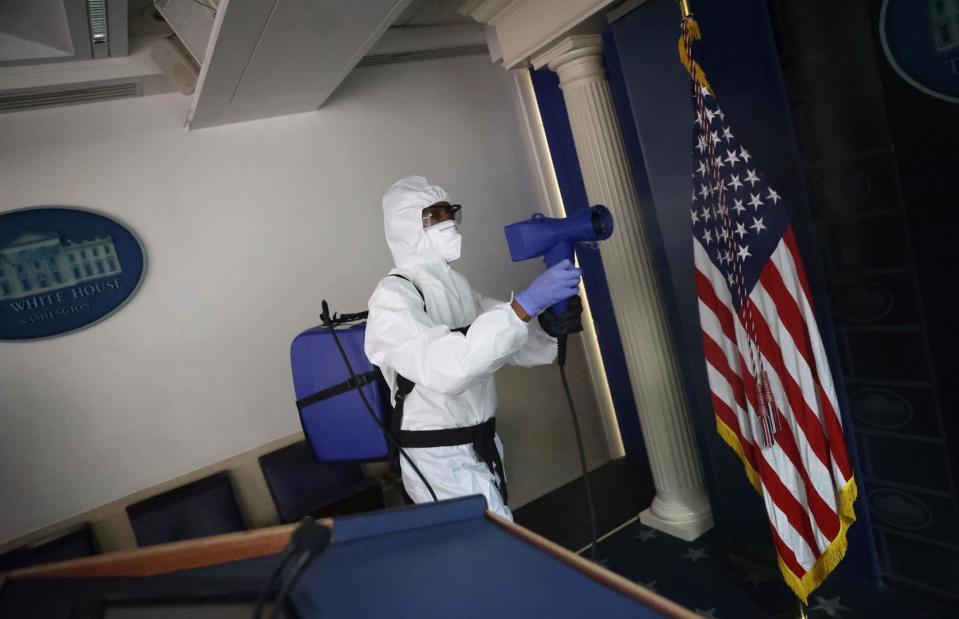
Win McNamee / Getty Images
Given that the out-going President Trump tested positive for coronavirus in October 2020, just a month before the presidential election, Biden was clearly not prepared to take any chances, and spent a reported £100,000 ($127k) on a scrupulous deep clean of the executive mansion before taking up residence.
In addition, his team spent a further £34,000 ($44k) on what was listed as “Inauguration carpet cleaning”, according to TMZ, so that any lurgy lurking in the deep pile would be eliminated before the new administration moved in.
First Lady demands
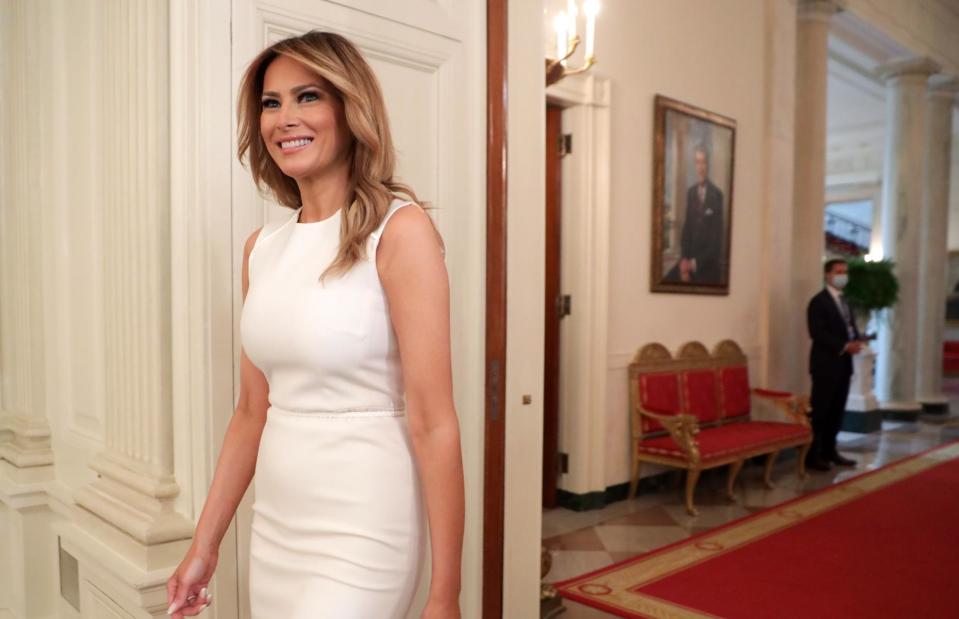
Alex Wong / Getty Images
First Ladies are known for their high standards, but in the 2020 biography The Art of Her Deal: The Untold Story of Melania Trump, two former housekeepers revealed some curious domestic secrets of the former First Lady, who instructed them “to leave perfect vacuum tracks in her white carpet and not to touch the six cinnamon-scented candles she kept near her computer.”
According to a report in The Mercury News however, the most challenging task was cleaning up her tanning spray in the bathroom!
Don’t touch my stuff
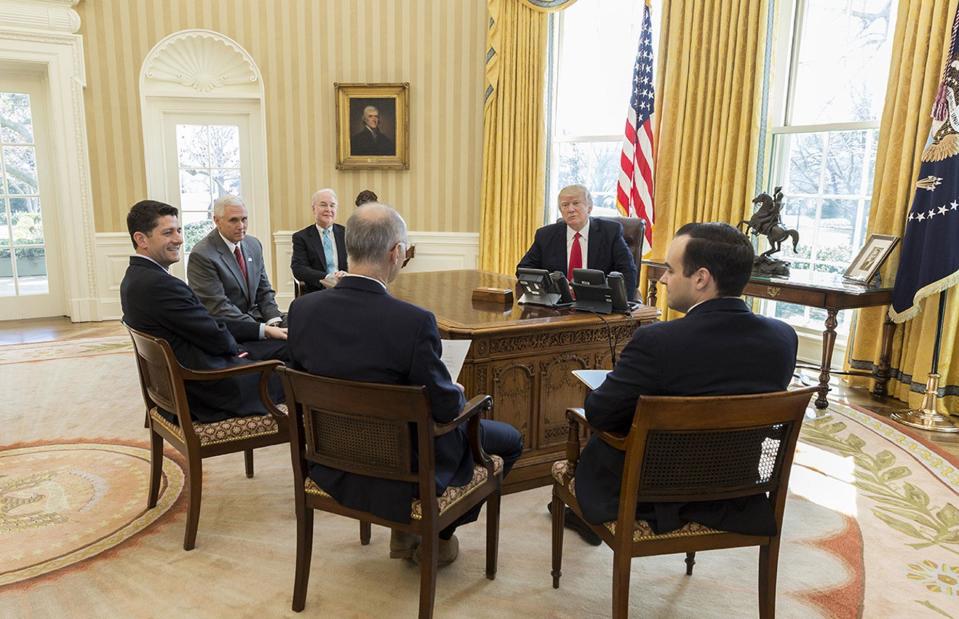
Official White House Photo by Benjamin Applebaum
White House staff are used to picking up after presidents, but according to Michael Wolff’s book Fire and Fury: Inside the Trump White House, Donald Trump did not like them touching his things, particularly his toothbrush, before asking first.
The former president was apparently fearful that he might be poisoned, which is why he frequented McDonald's. He also used to strip his own bed and instruct housekeepers when to wash his sheets.
Behind the scenes
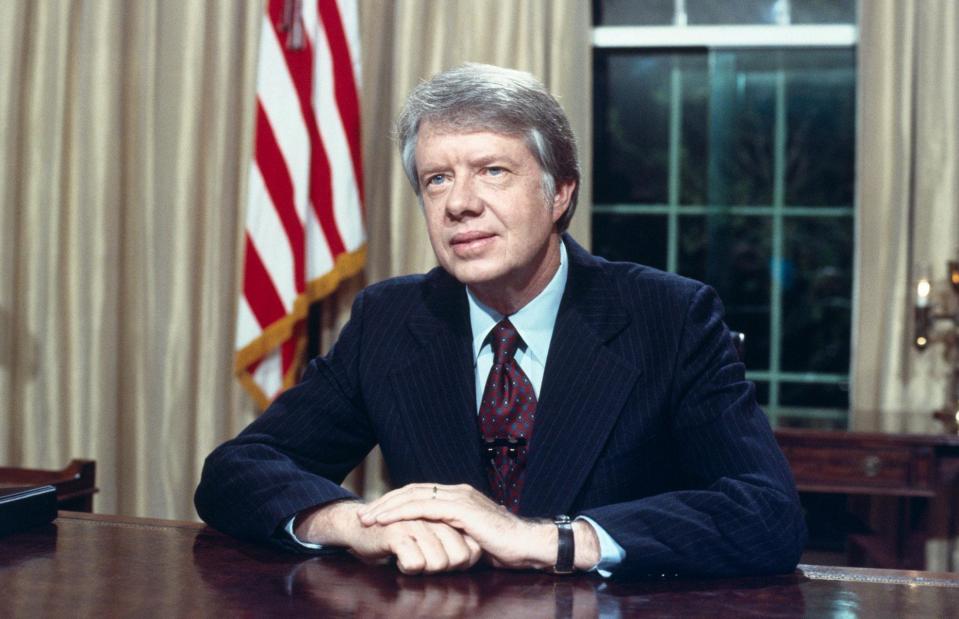
Bettmann / Contributor / Getty Images
Jimmy Carter, 39th US President, (seen here) understood just how important the people behind the scenes are. He called his staff at 1600 Pennsylvania Avenue “the glue that holds the house together”.
Nobody embodied this more than Stewart Calvin Stevens Sr, who kept glass in the White House gleaming for over three decades. “I cleaned everything… except the dishes,” he says in his memoir The White House Chandeliers: My Experience While Working for Seven U.S. Presidents.
The White House Chandeliers
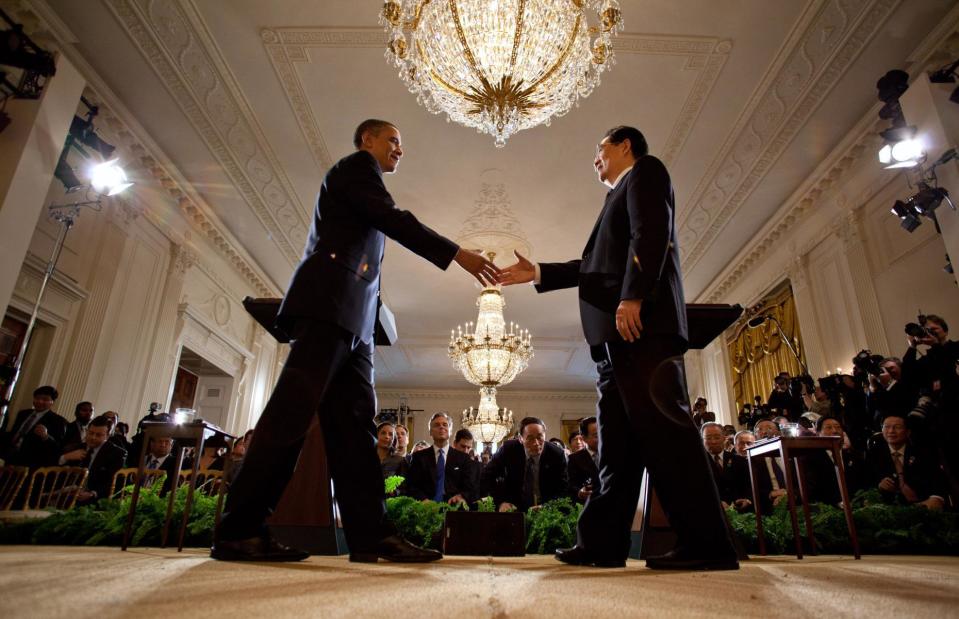
Official White House Photo by Chuck Kennedy
Stevens had retired by 2008, when the White House welcomed President Barack Obama, seen here in the East Room following a press conference with President Hu Jintao of China in 2011.
Sadly, Stevens passed away in 2023, but he would have approved of the glistening pendant seen here, which he described as the most challenging chandelier to clean in the entire White House. “It has more than 6,000 pieces of Bohemian cut glass,” he recalled.
Run like a world-class hotel
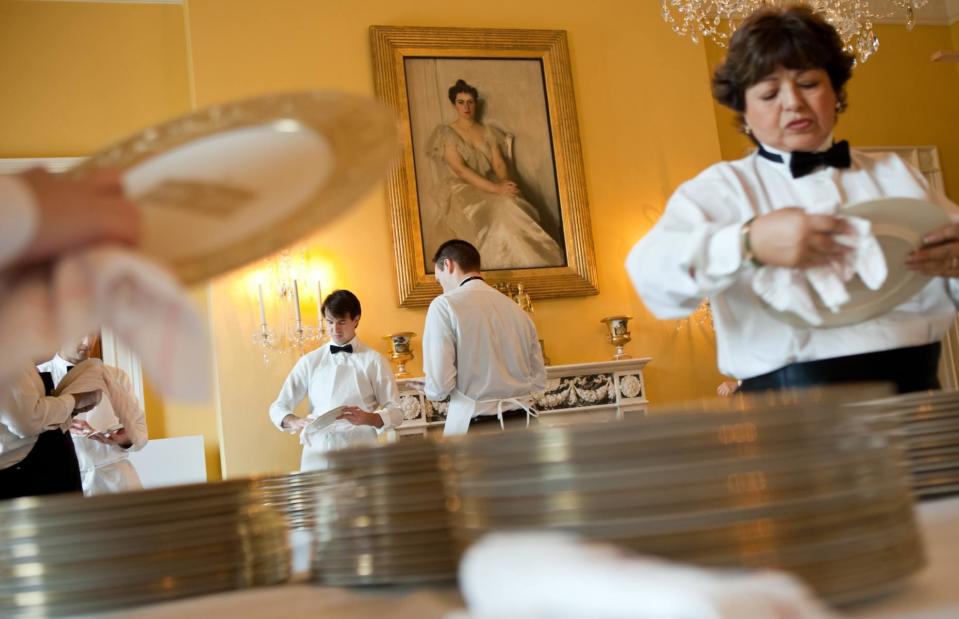
Official White House Photo by Samantha Appleton
Housekeeping standards are high at the White House, just as you would expect. Former chief usher Timothy Harleth, who was previously rooms manager at The Trump International Hotel in Washington, ran the White House like a world-class hotel, according to The New Yorker, but was dismissed just hours before President Biden took office in January 2021.
Devoted service
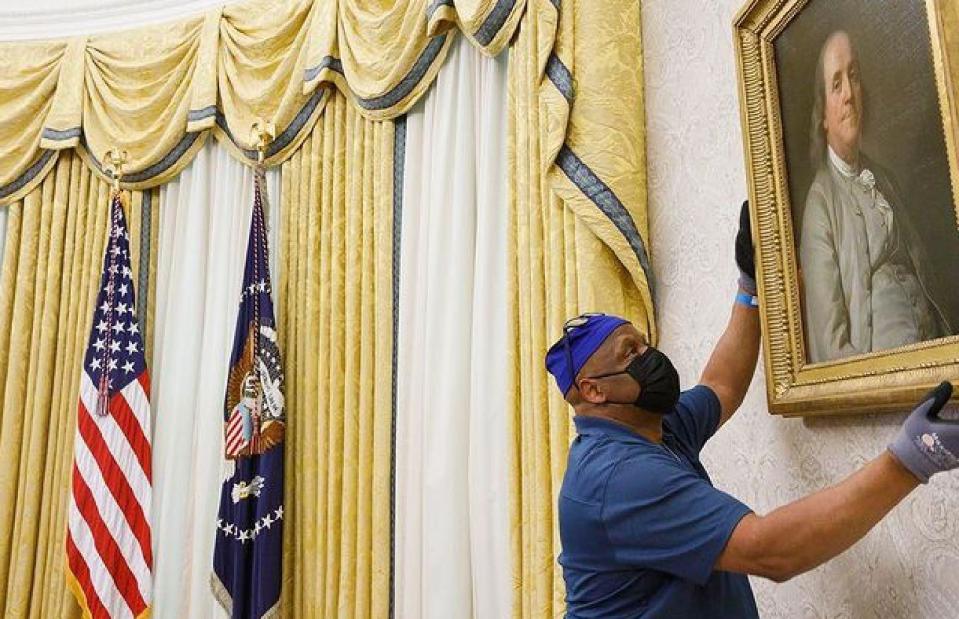
Chandler West / American Photo Archive / Alamy Stock Photo
Many staff have served multiple presidents and call themselves ‘lifers’. Their binding ethos is loyalty and discretion but they are expected to adapt to the changing style and needs of the First Family.
Their jobs are never guaranteed, however, although historically, according to The New Yorker, many residence staff jobs have been passed down through generations.
Trump Tower
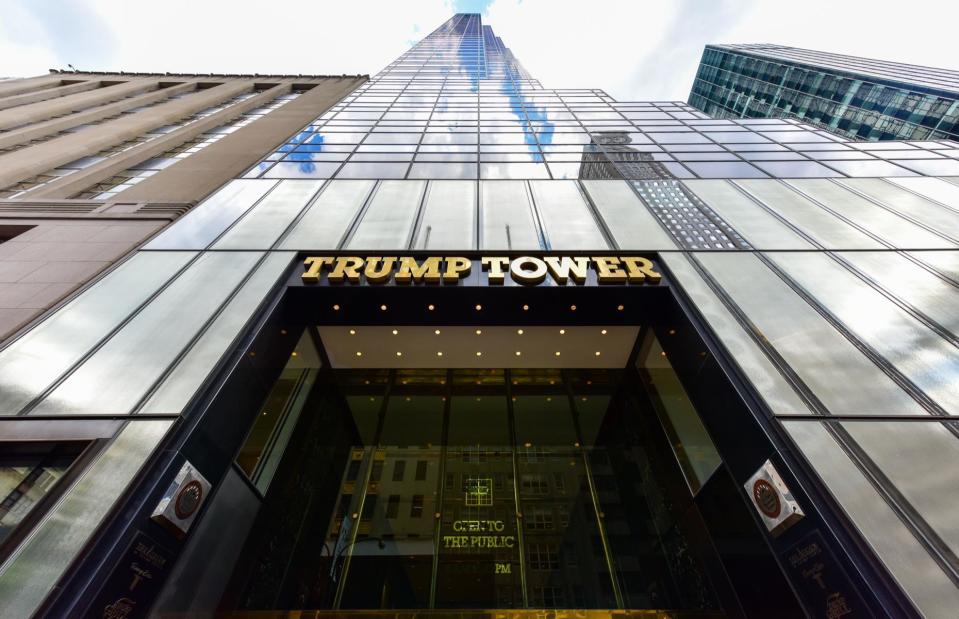
Felix Lipov / Shutterstock
As a hotelier himself, and resident of Trump Tower in New York, Donald Trump was in a unique position to comment on household matters.
Few former presidents, however, can claim to have walked in the shoes of their housekeeping staff. But Donald Trump got down and dirty back in 2011, when he undertook a variety of low-level jobs at one of his hotels. The video, which was produced in response to a request from The Oprah Winfrey Show, went viral.
Getting down and dirty
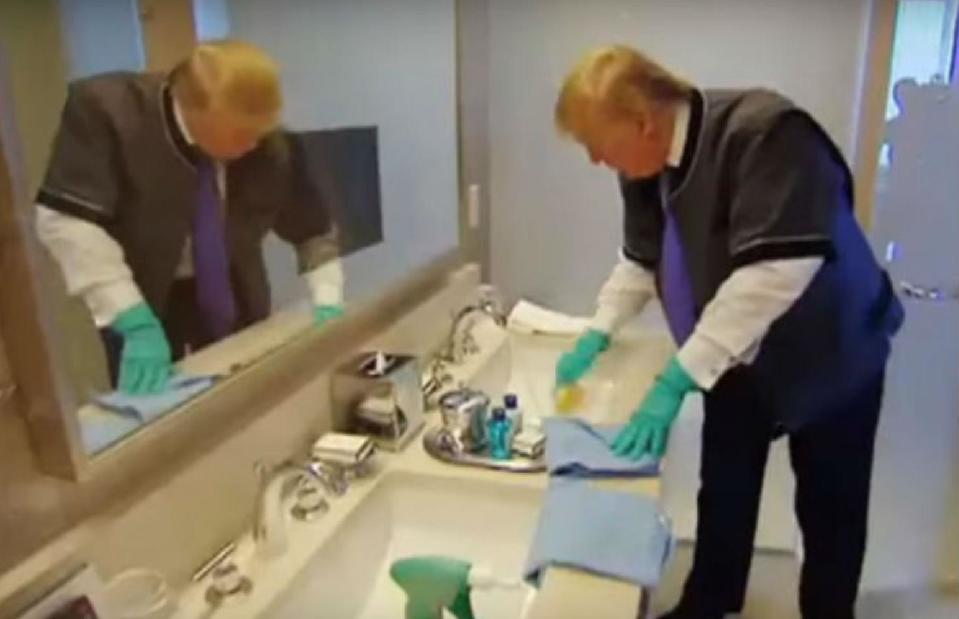
@Indicrat / YouTube
Trump was put to work at a variety of menial tasks including making the beds, vacuuming, and cleaning the bathroom, seen here, but he was reticent to try his hand at cleaning the toilet.
Still, it probably gave him a good insight into how hard his hotel staff, and those at the White House, work to meet his exacting standards.
Bedminster Golf Resort
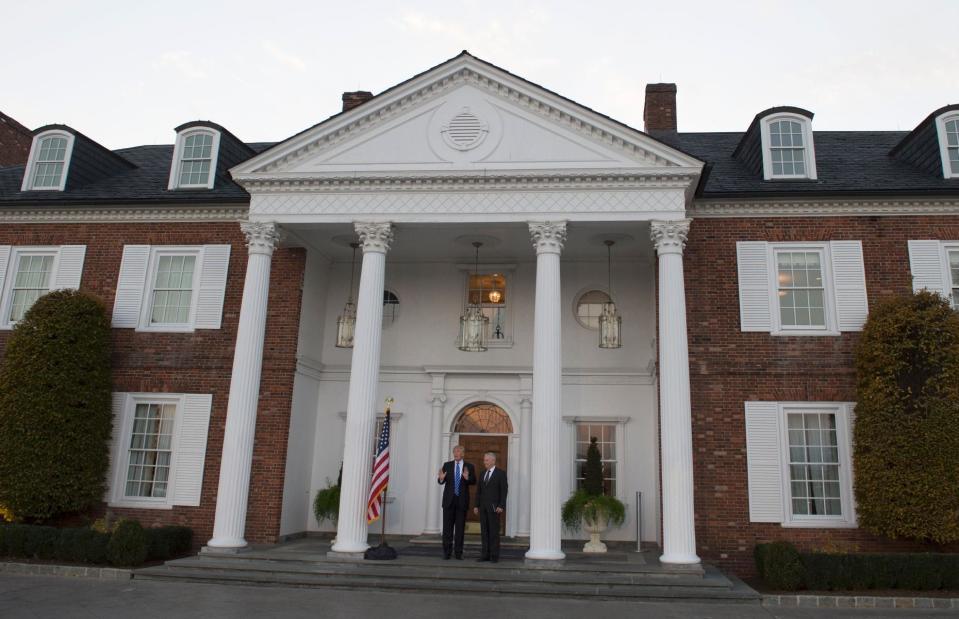
Don Emmert / AFP via Getty Images
Trump’s personal housekeeper, Sandra Diaz, gave us an insight into her employer’s household in 2019 when she told The Washington Post that Trump employed many undocumented immigrants like herself at his properties, including his villa at Bedminster, despite denouncing them when he ran for President.
She relates how she had to wear latex gloves and paper shoe coverings before entering his villa at Bedminster and would check his liquid face make-up had not dried out before his arrival.
Downton Abbey tips
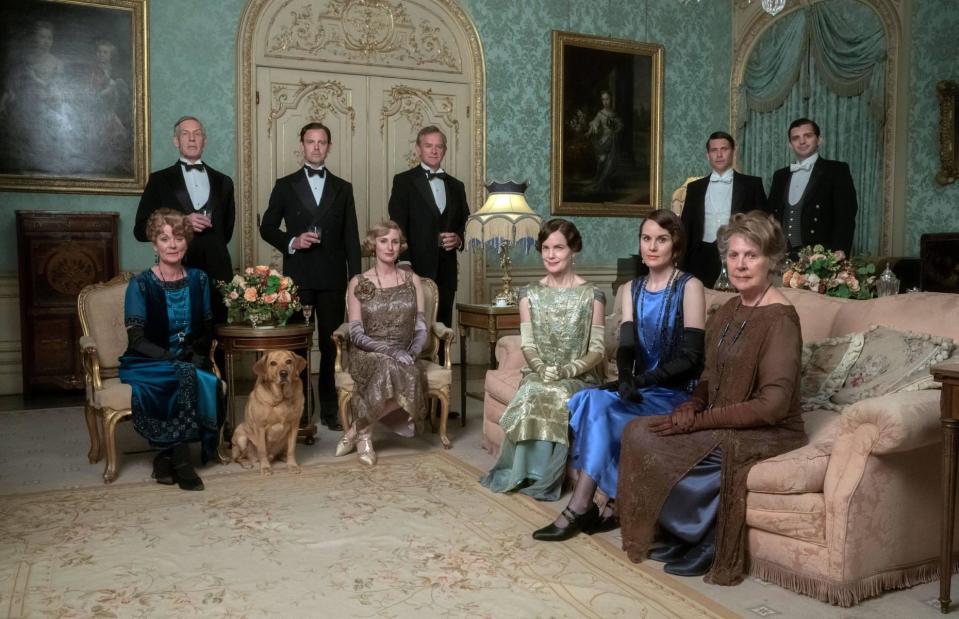
Landmark Media / Alamy Stock Photo
Although the show has fictional stories, Downton Abbey features real-life stately homes and gives us a glimpse into what it might be like to keep them in good condition. With all the cleaning products and state-of-the-art gadgets at our fingertips these days, it is much easier to maintain a clean home than it was in the past.
Back in the era of Downton Abbey, staff had to rely on homemade concoctions and a lot more elbow grease to keep the family mansion pristine. But it's remarkable how many cleaning hacks and remedies have stood the test of time...
Back-breaking work
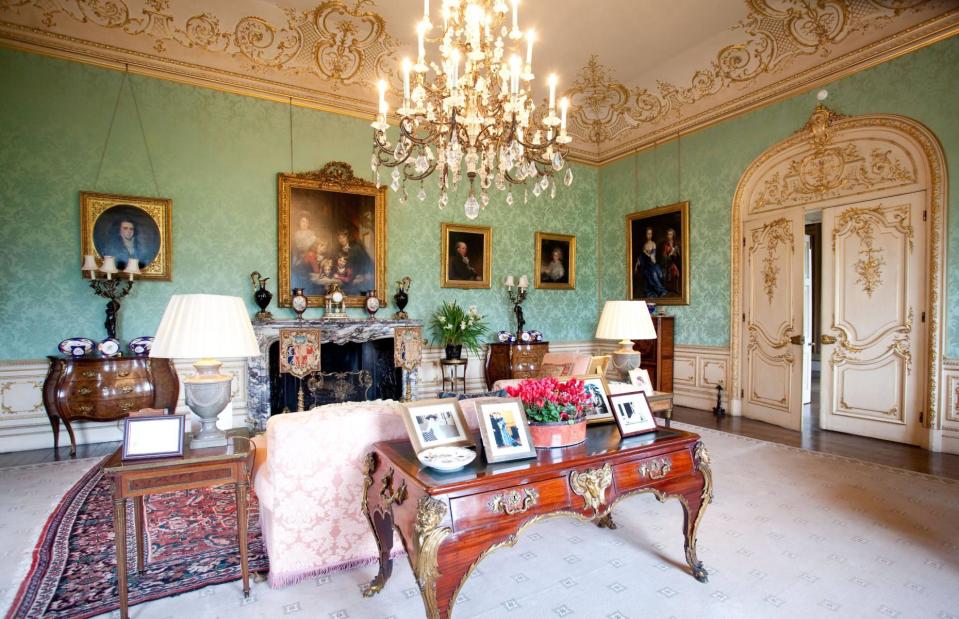
Jeff Gilbert / Alamy Stock Photo
There were no vacuums as we know them today in the early 20th century, so the chamber maids would have had the back-breaking work of beating the dust and grime off the household's rugs outdoors by hand. Just 20 minutes of sunshine a day is enough to kill germs and bacteria.
Meanwhile, floors were best cleaned on hands and knees with a bucket of water and a drop of ammonia and household soap. These days, we're more aware of the health risks associated with ammonia and are generally more careful with its usage.
Vintage household hacks
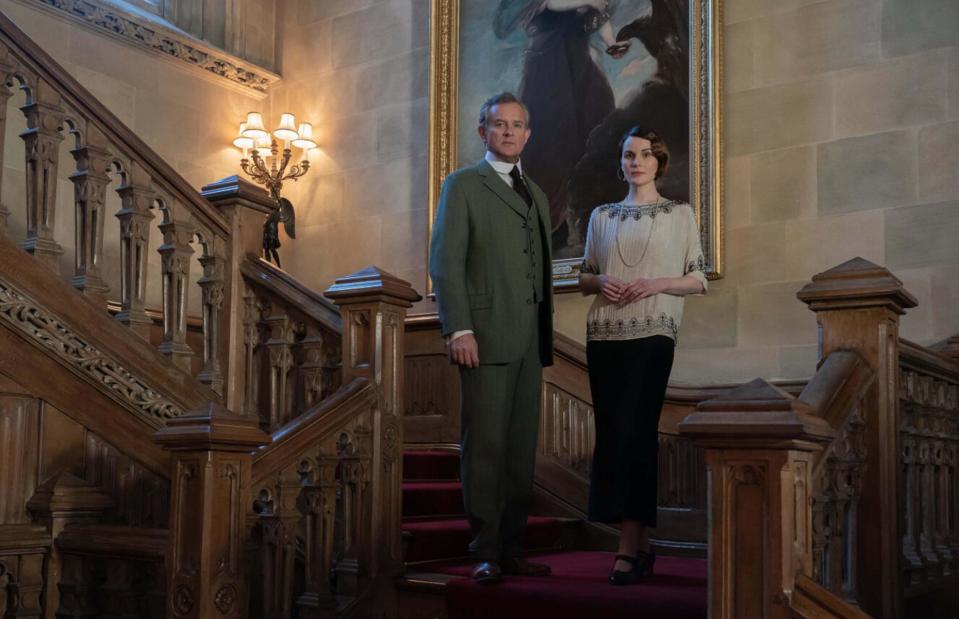
Moviestore Collection Ltd / Alamy Stock Photo
When it comes to cleaning a house as big as Downton, or Highclere Castle in Hampshire, as it is in real life, always start at the top since dust will fall as you work down.
Odours meanwhile, tend to rise, so a good way of keeping the house fresh was to create a spray from water and fresh lemon, and giving it a good spritz. This can also be used to clean windows, which can be wiped dry with old newspaper. Houseplants dotted around are also a good way to banish unwanted smells.
Pots and pans
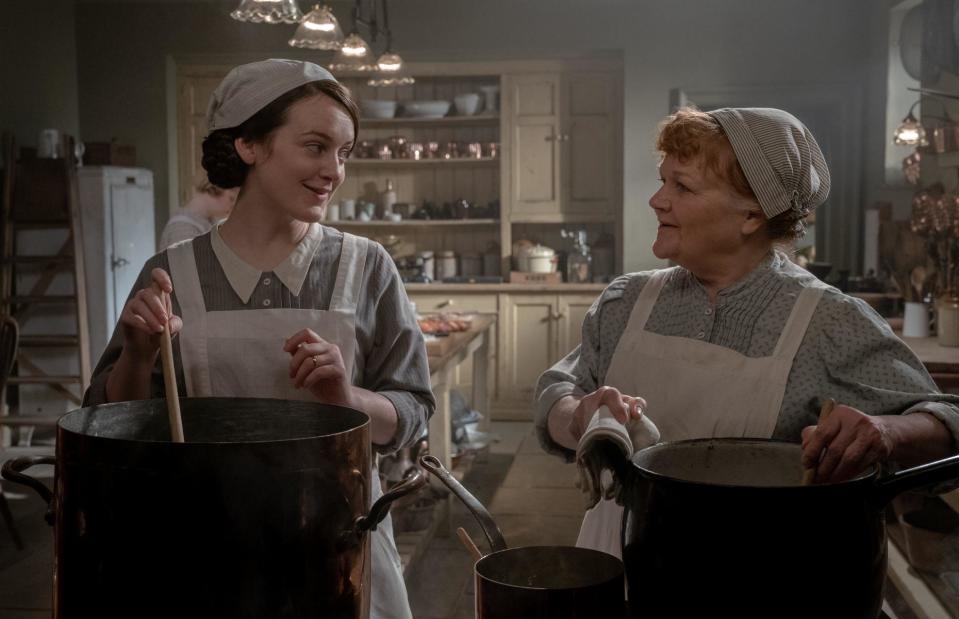
Moviestore Collection Ltd / Alamy Stock Photo
There were no dishwashers at Downton, but according to the original domestic goddess, Mrs Beeton, the best way to remove stubborn stains from utensils was by rubbing on a solution made from warm water and baking soda.
Meanwhile, burnt-on food can be removed by boiling water in an affected pan with a tablespoon (18ml) of baking soda. When the burnt-on material is loosened, rub with a steel wool pad and rinse.
Chatsworth House
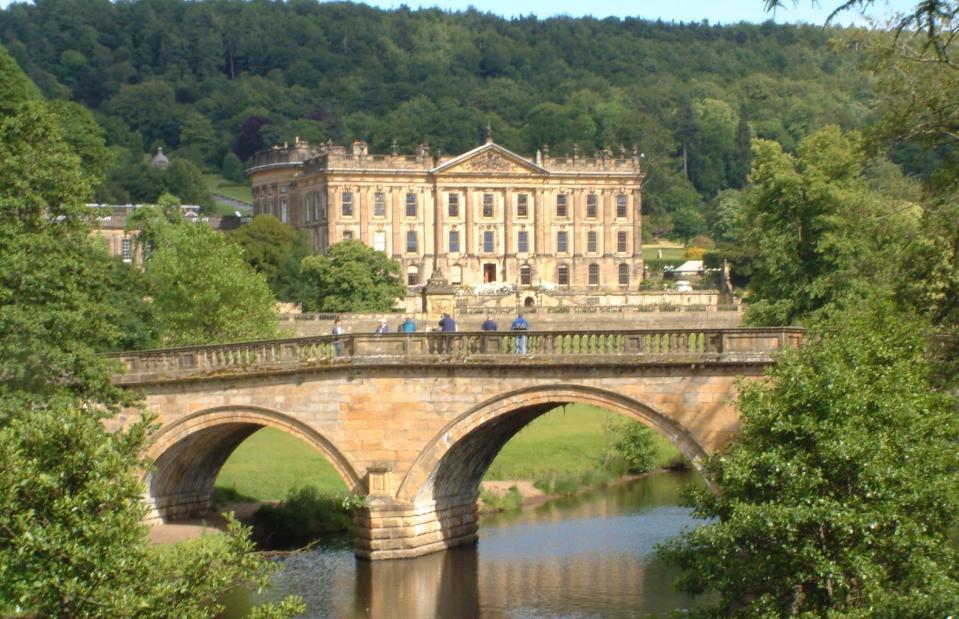
Rob Bendall / Highfields / Wikimedia Commons
If all else fails, check out the handy advice from former housekeeper at Chatsworth House, Christine Robinson, who kept the Derbyshire stately home in pristine condition for decades.
Her top tips involve putting tennis balls in the tumble dryer with your feather pillows to plump them up, and even removing dirty stains on wallpaper with stale but slightly moist bread.


